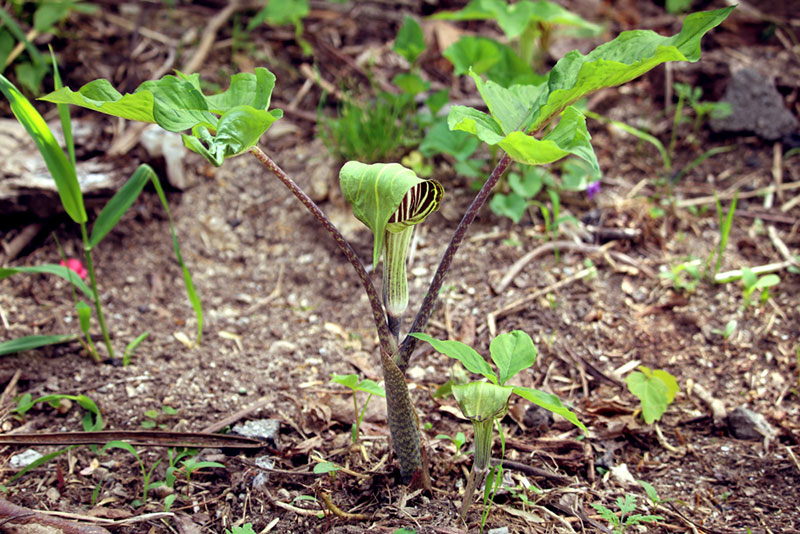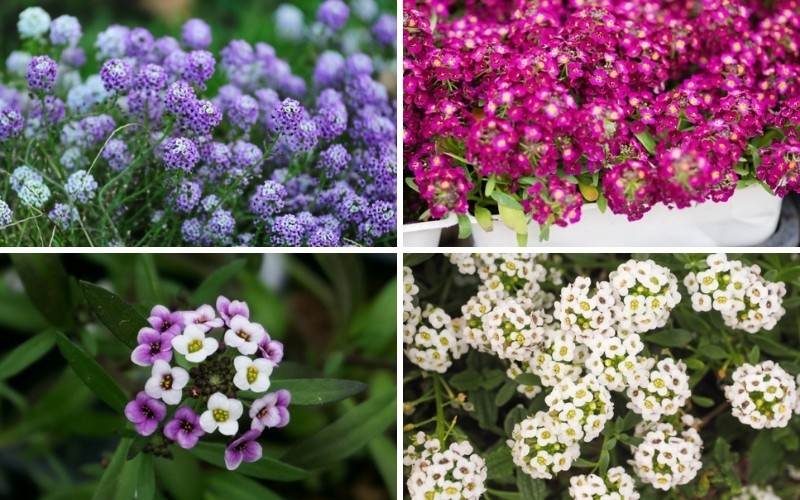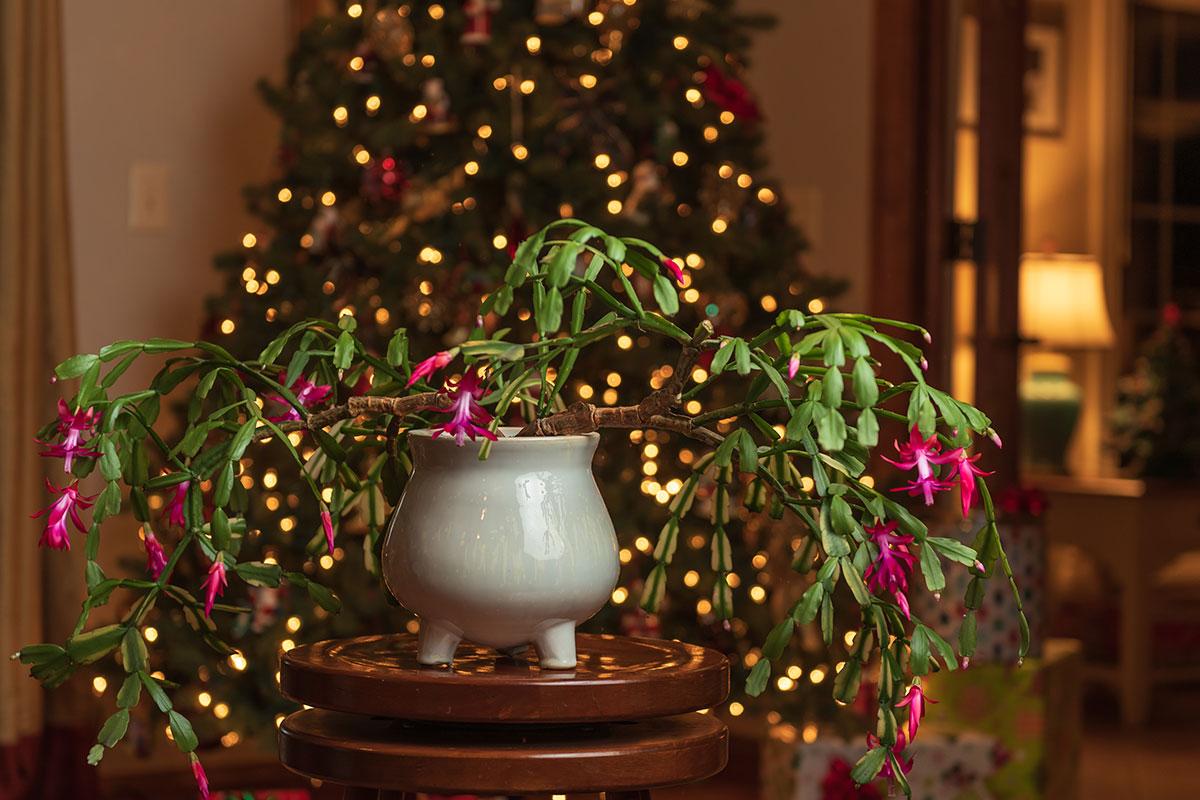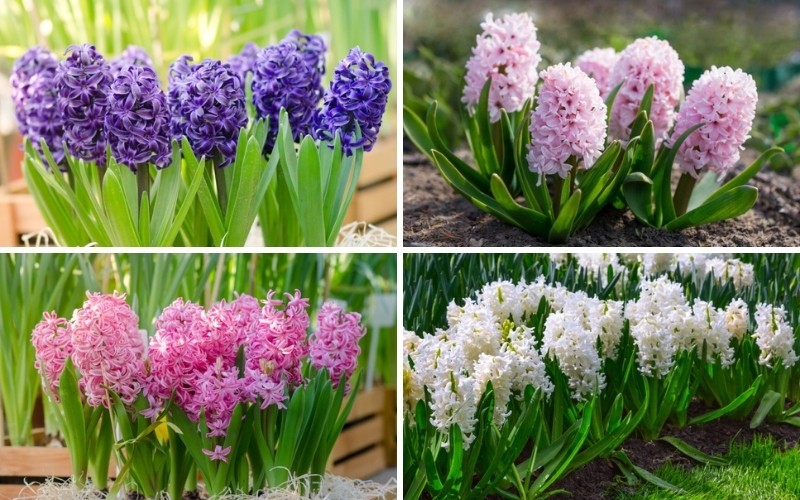
Jack in the Pulpit is a unique looking plant that looks like a tall stalk that grows up into a hooded cover. The flowers are actually very tiny on this plant, and they can be seen on the edges of the hood-like structure. During the fall, you will see bright red berries on the plant as well.
This plant grows natively in the lower 48 states as well as in the southern part of Canada. Growing this plant is effortless in a woody area that is shady and moist, but it will tolerate other growing conditions as well. Often seen in hardiness zones four to nine, a mature plant will grow to be about two feet tall. Let’s take a more in-depth look at the care that this plant requires.
Light and Temperature Requirements
When it comes to lighting for this plant to grow, you do not want it to be in full sun. Instead, give the plant some shade like it would get naturally growing on the forest floor. In fact, this is one of the few plants that will even grow well in full shade, so planting it under a tree that blocks the sun can be beneficial. It does not need a specific temperature to grow, but since it prefers the shade, it will do best in mild temperatures that are not too hot or too cold.
Watering Requirements
This plant likes to grow in moist soil, so it will need an average amount of water when you are growing it. Ideally, if it rained recently, you should only need to water it about once a week. Make sure that you are not overwatering the plant because boggy conditions for too long of a period can cause the roots to rot.

Soil and Fertilizer Requirements
Jack in the Pulpit will grow in most types of soil, so you don’t have to worry about it being incredibly well-draining. In fact, you ideally would like the soil to be similar to what you would find where it grows naturally. This means that damp acidic soil that is heavy in nutrients will be ideal for the plant. Personally, I would suggest using compost or peat moss to give the soil a few additional nutrients as it grows. Otherwise, fertilizer is not recommended for the growth of this plant.
Propagation
The plant can easily be propagated by using the berries that turn red at the end of summer. Once the berries are red, you will need to remove the seed from the berries gently. Each berry will contain five to six seeds that can create a new plant. Once the seeds are harvested, they can be planted directly outdoors, and they will grow as they grow in the wild. This means planting the Jack in the Pulpit in a shady location with somewhat moist soil.
You can also take the time to plant them indoors and give them a bit more care as they grow. Before you plant the seeds indoors, they will need to be kept cool in the refrigerator for a period of 60 to 75 days. This process prepares the seeds for germination, and it mimics what the seeds would experience if it were planted outside in the fall.
During this time, the seeds should be placed in peat moss to keep them moist and cold. Ideally, they can be stored in small containers or something as simple as a plastic bag. When the time is up, the seed can be planted in any flower pot as it begins to grow. The plant should start growing in about two weeks. Make sure that it gets enough water until it matures, and when spring arrives, the seed can be moved outside to grow.
This plant can also be divided for propagation. In the fall, carefully dig up the entire plant, even the roots. Separate any new tubers in the roots that have leaves on them, and plant them in a hole. Spread some organic material over the planted tubers like leaf litter or pine needles. In the spring, leaves will emerge from the ground. At this point, provide the plant with some water to help it grow. Do not water it in the fall, winter, or early spring because it will be dormant during this time.
Pest, Diseases, and Other Concerns
The plant does not suffer from many pests or diseases, so you will not have to worry about keeping it healthy. One concern that you will want to be aware of is the fact that the berries on the plant are inedible. They contain oxalate crystals that will irritate your mouth the entire way through your system. The plant can also irritate your skin when you touch it, so make sure to wear gloves when handling a Jack in the Pulpit.



